Quick Nav
 Neptune
Neptune
Neptune is the eighth planet from the Sun and the fourth largest (by diameter). Neptune is smaller in diameter but larger in mass than Uranus. In Roman mythology Neptune (Greek:Poseidon) was the god of the Sea. Neptune has many moons and one big one named Triton. It also has Rings.
| Distance from Sun: | |
|---|---|
| Mean: | 30.06 AU |
| Perihelion: | 4,444,450,000 km |
| Ahelion: | 4,545,670,000 km |
| Size: | |
| Volume: | 6.254 x 1013 km3 |
| Diameter: | 49,528 km |
| Mass: | 1.02 x 1026 kg |
| Motion: | |
| Year: | 164.8 E Years |
| Day: | 16 E Hours |
| Other: | |
| Density: | 1,638 kg per m3 |
| Surface Temperature: | -213.7°C or 59.3°K |
After the discovery of Uranus, it was noticed that its orbit was not as it should be in accordance with Newton's laws. It was therefore predicted that another more distant planet must be perturbing Uranus' orbit. Neptune was first observed by Galle and d'Arrest on 1846 Sept 23 very near to the locations independently predicted by Adams and Le Verrier from calculations based on the observed positions of Jupiter, Saturn and Uranus. An international dispute arose between the English and French (though not, apparently between Adams and Le Verrier personally) over priority and the right to name the new planet; they are now jointly credited with Neptune's discovery. Subsequent observations have shown that the orbits calculated by Adams and Le Verrier diverge from Neptune's actual orbit fairly quickly. Had the search for the planet taken place a few years earlier or later it would not have been found anywhere near the predicted location.
More than two centuries earlier, in 1613, Galileo observed Neptune when it happened to be very near Jupiter, but he thought it was just a star. On two successive nights he actually noticed that it moved slightly with respect to another nearby star. But on the subsequent nights it was out of his field of view. Had he seen it on the previous few nights Neptune's motion would have been obvious to him. But, alas, cloudy skies prevented obsevations on those few critical days.
Neptune's composition is probably similar to Uranus': various "ices" and rock with about 15% hydrogen and a little helium. Like Uranus, but unlike Jupiter and Saturn, it may not have a distinct internal layering but rather to be more or less uniform in composition. But there is most likely a small core (about the mass of the Earth) of rocky material. Its atmosphere is mostly hydrogen and helium with a small amount of methane. Neptune's blue color is largely the result of absorption of red light by methane in the atmosphere but there is some additional as-yet-unidentified chromophore which gives the clouds their rich blue tint.
HST observations of Neptune in 1994 show that the Great Dark Spot has disappeared! It has either simply dissipated or is currently being masked by other aspects of the atmosphere. A few months later HST discovered a new dark spot in Neptune's northern hemisphere. This indicates that Neptune's atmosphere changes rapidly, perhaps due to slight changes in the temperature differences between the tops and bottoms of the clouds.
Neptune can be seen with binoculars (if you know exactly where to look) but a large telescope is needed to see anything other than a tiny disk. There are several Web sites that show the current position of Neptune in the sky, but much more detailed charts will be required to actually find it. Such charts can be created with a planetarium program.
Neptune also has rings. Earth-based observations showed only faint arcs instead of complete rings, but Voyager 2's images showed them to be complete rings with bright clumps. One of the rings appears to have a curious twisted structure. Like Uranus and Jupiter, Neptune's rings are very dark but their composition is unknown.
Neptune's rings have been given names: the outermost is Adams (which contains three prominent arcs now named Liberty, Equality and Fraternity), next is an unnamed ring co-orbital with Galatea, then Leverrier (whose outer extensions are called Lassell and Arago), and finally the faint but broad Galle.
Neptune's magnetic field is, like Uranus', oddly oriented and probably generated by motions of conductive material (probably water) in its middle layers.
Missions to Neptune
Neptune is the farthest planet from us so it's hard to get to. We did send one probe out it's way, but it just did a flyby giving us most of what we know about the planet.
| # | Name | Launch Date | Closest Approach | Mission End Date |
|---|---|---|---|---|
| 1 | Voyager 2 | 8/20/1977 | 08/25/1989 | Active |
 Neptune Gallery
Neptune Gallery
These are pictures of Neptune and some of it's moons.
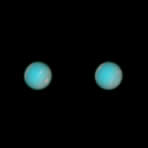 Hubble - Neptune
Hubble - Neptune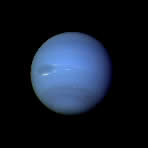 Voyager 2 - Neptune 1
Voyager 2 - Neptune 1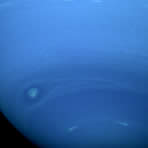 Voyager 2 - Neptune 1
Voyager 2 - Neptune 1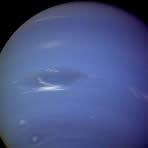 Voyager 2 - Neptune 3
Voyager 2 - Neptune 3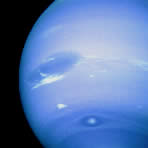 Voyager 2 - Neptune 4
Voyager 2 - Neptune 4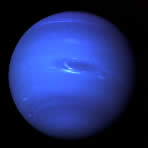 Voyager 2 - Neptune 5
Voyager 2 - Neptune 5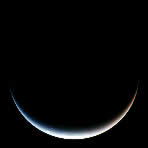 Voyager 2 - Neptune 6
Voyager 2 - Neptune 6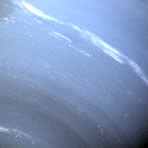 Voyager 2 - Neptune Clouds 1
Voyager 2 - Neptune Clouds 1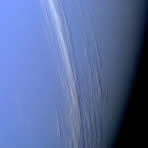 Voyager 2 - Neptune Clouds 2
Voyager 2 - Neptune Clouds 2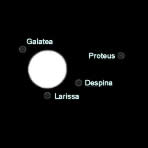 Voyager 2 - Neptune Moons
Voyager 2 - Neptune Moons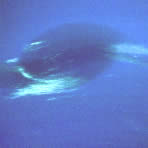 Voyager 2 - Neptune Spot 1
Voyager 2 - Neptune Spot 1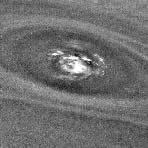 Voyager 2 - Neptune Spot 2
Voyager 2 - Neptune Spot 2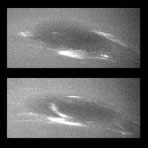 Voyager 2 - Neptune Spot 3
Voyager 2 - Neptune Spot 3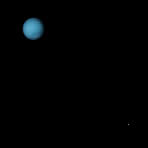 Voyager 2 - Neptune & Triton 1
Voyager 2 - Neptune & Triton 1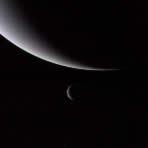 Voyager 2 - Neptune & Triton 1
Voyager 2 - Neptune & Triton 1